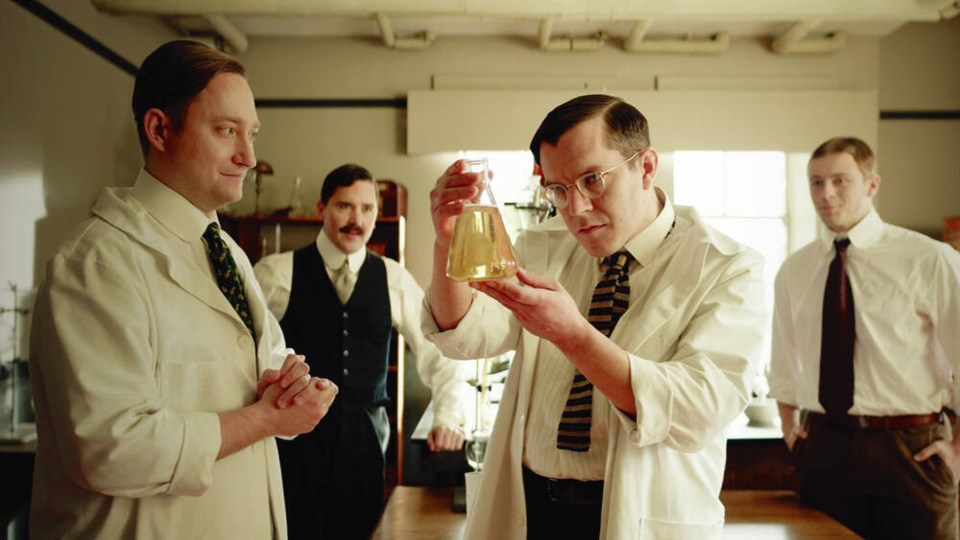University of British Columbia researchers and their colleagues recently announced the results of a phase 1 and 2 clinical trial that showed a stem-cell-based treatment delivered through an implantable device can produce insulin in the human body.
The treatment was provided as part of an international multi-year clinical trial to 15 B.C. patients living with a severe form of type 1 diabetes. This is the first reported evidence that stem cells that have been implanted in humans to transform into pancreas cells secrete insulin in response to eating.
It was one of two studies published Dec. 2 in the journals Cell, Stem Cell and Cell Reports Medicine.
The study patients also spent 13 per cent more time in the target blood-sugar range, and some were even able to reduce the amount of insulin they injected.
However, much as Nature Boy would like to make Doritos, ice cream and pie the three main food groups in his diet forever more, a stem-cell cure for diabetes remains a distant goal.
“But by the time I develop diabetes, it could be standard treatment,” he protested when I commented pointedly on the celebratory feast he had gathered when he heard the news.
That’s not something he should count on. First of all, the trials were small. Fifteen patients in B.C., plus another 11 patients in a similar study elsewhere, took part. They also had a severe form of type 1 diabetes.
Type 1 diabetes is an autoimmune disease in which a person’s immune system attacks the pancreas, degrading its ability to produce insulin. Nature Boy’s diet of choice, combined with his long hours of couch-lounging screen time watching British game shows, would trigger the other kind of diabetes.
In type 2 diabetes, the pancreas still produces insulin, but the body has become resistant to the critical, sugar-metabolizing hormone.
The clinical trial had other limitations. Two patients experienced adverse reactions associated with the immunosuppressant required to prevent their bodies’ rejection of the stem-cell implants. There was also no control group, and the interventions were not blinded, so cause and effect couldn’t be definitively identified, and outcomes were variable among the small number of participants.
And they were also early-stage trials.
In other words, the trials are just one step in the often decades-long process of research and testing that leads to new medical treatments in the 21st century. That’s not to say that it isn’t a milestone achievement, just that we’ve a ways to go before it becomes standard clinical practice.
But perhaps Nature Boy was thinking of the process Frederick Banting and his colleagues experienced when they worked on developing a viable insulin treatment 100 years ago. That process was lightning quick by today’s standards.
Banting, a surgeon practising in London, Ont., conceived the idea to isolate the internal secretion of the pancreas in the wee morning hours of Oct. 31, 1920. He was inspired by a case report he had read the day before in the journal Surgery, Gynecology and Obstetrics.
The following week, he and University of Toronto researcher John Macleod devised a research plan.
By August 1921 — just 10 months later — Banting and his assistant Charles Best had prepared an effective extract of insulin from a dog pancreas in Macleod’s lab.
The following January, biochemist James Collip successfully purified the insulin from Banting and Best’s canine extract, and on Jan. 23, 1922 — 100 years ago today — Banting and team tested the results on a young patient dying from diabetes at Toronto General Hospital. Fourteen-year-old Leonard Thompson responded spectacularly to the injections.
By the summer of 1922, the University of Toronto lab was producing insulin in sufficient quality and quantity that diabetes patients from around the world were travelling to Toronto for treatment. Patents were granted, production licences were given out and diabetes was no longer the death sentence it had been.
Today, almost 560,000 British Columbians live with type 1 or type 2 diabetes, and on average, more than 29,000 additional people are diagnosed each year.
The annual direct cost of diabetes in B.C. is $546 million, about 80 per cent of which comes from treating diabetes’ serious complications, which include heart disease, stroke, kidney failure, blindness and amputation.



